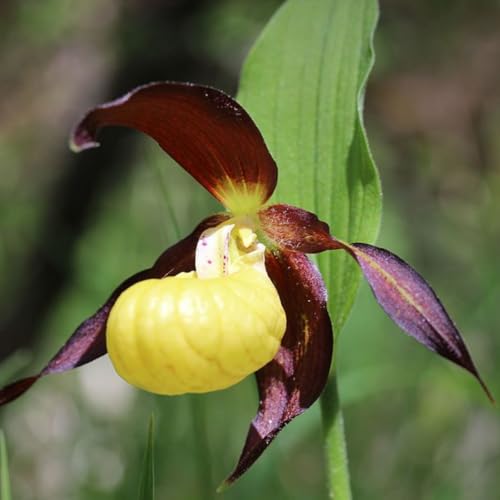What constitutes recent vs distant?:evil: .
Several thousand years

Actually there are mechanisms that have been documented in nature, that allow what has been termed as cataclysmic evolution, where a new species can arise in as little as 3 generations. Its complicated, but the end result is a species genetically isolated from the parental species with its own unique chromosome count. This chromosomal count will make back breeding to the source species infertile. Search; amphidiploidy (in genetic evolution textbooks) So the time frame does not have to be long, but this is an extroidinarily rare phenomena, so the usual genetic drift and population isolation theory is the one that most likely dominates, and for this we are talking thousands and 10's of thousands of years.
:evil: How soon will orchid hybridizers get to call their crosses "species"?:evil:
Only when their new creation gets out of the greenhouse and starts breeding on its own. See the discussions of Paph x yappianum and Paph x jogjae. Both are man made hybrids that have escaped into the wilds of Indonesia, and have begun reproducing a stable wild population. The history is fairly well documented, I don't know when naturalized hybrid would be considered a species by taxonomists. In Hawaii quite a number of hybrids have escaped, and naturalized. A taxonomic nightmare is lurking out there. A good question for Braem or Christiansen.
Actually I agree with you Leo on the basis of the observed uniformity and the probability that such hybridzation was/is not "recent". But from the mutation standpoint we don't call albinos and melanistics new species either.
Key with albinos and melanistics is that they only differ by ONE trait, that of color. Color generally has never been considered a significant trait by itself, though it can be a key trait when included in a constelation of traits.
The true definition of species is based on population demographics and not identification metrics (taxonomy) so it could be a "true" species if there are self supporting populations of hermanii. If its an occaisional oddball that pops up in a group of some other self supporting species I'd look for mutant variety or recent hybridization.
Sorry Rick, this statement is NOT quite true as stated. The job of assigning names to species is by Int. Commitee on Botanical Nomenclature rules as published in its journal TAXON, the naming job is still assigned to Taxonomists. Unfortunately the Taxonomist's definition of species is still based on the metrics of a single specimen, which is identified as the TYPE SPECIMEN. As Guido would say; "Period - Full Stop". Now you and I agree that the geneticist's and evolutionary biologist's definition of species looks more like what you state is the "True" definition of species. BUT as of this point in time, the rules for validly naming a species are 100% under the control of the Taxonomists, and are based on the METRICS of a SINGLE SPECIMEN. Fortunately, most new taxonomy grads are also versed in Evolutionary Biology, and they try as best as they can to use the evolutionary genetics based definitions when they can, and like Averyanov did in his book, allong with the single type specimen he included measurements from 50 additional individuals in his species description. But this is still not absolutely required by the ICBN and the rest of the scientific community. So even today, I could take a single specimen, make a pressed herbarium sheet, and describe a new species. Witness Paph dixlerianum, described from a single specimen purchased in a village market in Burma and never found again. (likely an Orchid Zone bred suhkakuli hybrid that found it's way into the hands of a Burmese peasant farmer, then sold as something new to the American tourist)
Hope I haven't beaten this one to death. Or gotten too far out over my ski's, it has been 32 years since I sat in Dr. James F. Crow's genetics class, and I may have "mis-remembered".
Leo












































